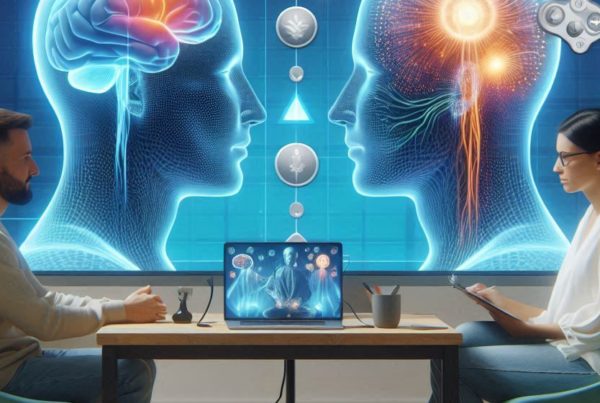Welcome, esteemed healthcare professionals, to an enlightening exploration of the science behind Virtual EMDR. In this blog post, we will delve into the innovative world of virtual Eye Movement Desensitization and Reprocessing (EMDR) and shed light on the remarkable therapeutic potential it holds.
Virtual EMDR is a revolutionary approach to therapy that harnesses the power of technology to provide effective and convenient treatment for individuals experiencing various mental health challenges. Unlike traditional in-office therapy, virtual EMDR offers the flexibility of online sessions, allowing clients to access therapy from the comfort of their own homes. This accessibility removes geographical barriers and provides individuals with greater convenience and privacy. Moreover, virtual EMDR has proven to be highly effective, with numerous studies demonstrating its efficacy in reducing symptoms of anxiety, trauma, and other mental health disorders. The combination of advanced technology and the proven therapeutic techniques of EMDR make virtual EMDR an innovative and powerful tool for healthcare professionals and individuals seeking effective mental health treatment.
Virtual EMDR works due to its ability to replicate the core principles and techniques of traditional EMDR therapy in a virtual environment. By combining elements such as bilateral stimulation, eye movements, and cognitive restructuring, virtual EMDR creates a similar therapeutic effect for individuals experiencing trauma, anxiety, and other emotional disturbances. This innovative approach offers convenience, accessibility, and the potential for increased treatment adherence, making it a promising solution for healthcare professionals and individuals seeking effective mental health interventions.
Virtual EMDR works because it leverages the power of technology to provide accessible and convenient therapy. Through virtual platforms, individuals can engage in EMDR sessions from the comfort of their own homes, eliminating the barriers of time, location, and transportation. This innovative approach allows for greater flexibility and reach, enabling more individuals to benefit from EMDR therapy and its potential for healing and transformation.
In conclusion, virtual EMDR is a revolutionary therapy that has the potential to transform the way we address traumatic experiences. Its effectiveness stems from its ability to provide convenient access, personalized treatment, and enhanced therapeutic outcomes. By utilizing virtual platforms, healthcare professionals can reach a wider audience and deliver EMDR therapy remotely, breaking down geographical barriers and increasing accessibility for patients in need. Additionally, virtual EMDR allows for tailored treatment plans, ensuring that individuals receive therapy that addresses their specific needs and experiences. Moreover, the integration of technology in EMDR therapy brings unique advantages, such as the ability to incorporate visual and auditory stimuli to enhance the therapeutic process. These advancements contribute to improved treatment outcomes and a more efficient healing process for patients. In summary, virtual EMDR represents an innovative approach to therapy that offers numerous benefits for both healthcare professionals and patients, ultimately revolutionizing the way we approach trauma treatment.




